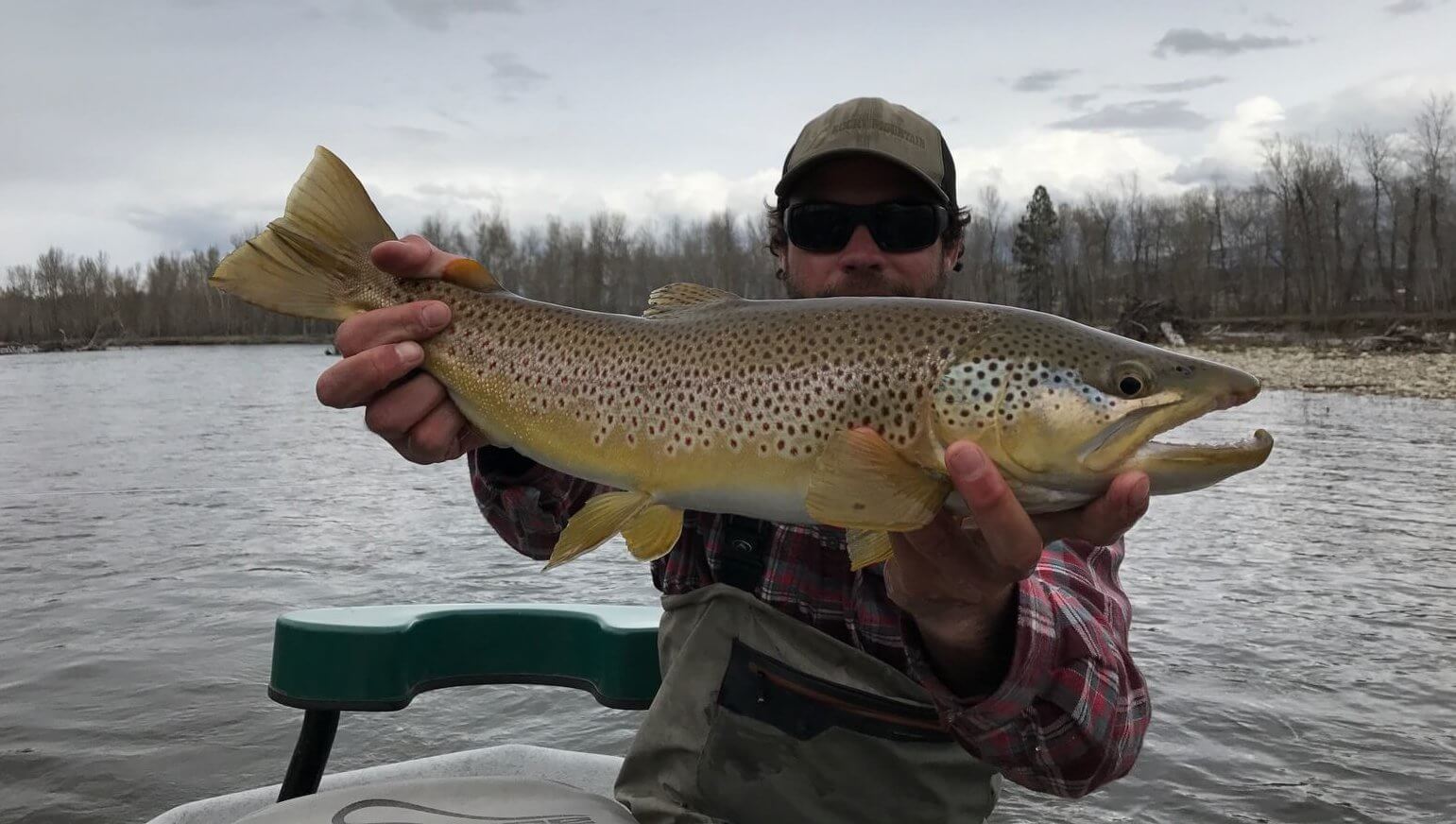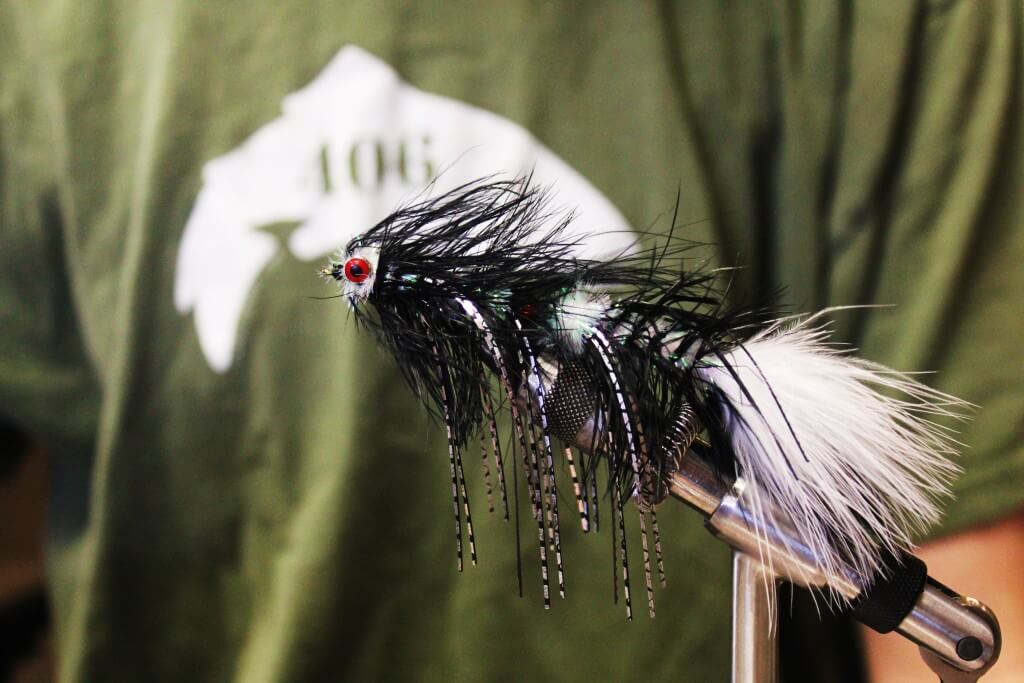As Euro Nymphing becomes more and more popular, the strike indicator is going through another major change. No longer is it the bobber we’ve come to know and trust- the indicator is becoming a more subtle and delicate apparatus. And that may be a very good thing.
We all remember the first time we saw a Thing-A-Ma-Bobber. For many nymph fisherman, it immediately became the go-to rig. They never sink, float better than corks and are easy to see. But about 3 years ago, we started to hear rumblings out of the Bighorn valley that trout were becoming wary of the Thing-A-Ma-Bobber and their progeny. Whether it was the heavy entrance into the water, or the actual presence of the indicator above the fly, Bighorn guides felt the indicator was negatively impacting their catch rate. Many Bighorn guides have gone back to balloons, the old Polypropylene indicator or the New Zealand Wool indicator.
One of the interesting aspects of the Thing-A-Ma-Bobber style indicator is its size, and the size most people choose to use. If you’ve ever gone swimming and played with a ball in the water, you know how much air wants to float! Even swimming a 6” ball to the bottom is a struggle. The standard 3/4” Thing-A-Ma-Bobber would float 4 Double Bead Stone Flies (if that was legal in Montana) with no problem.
The larger the indicator, the more it disturbs the water as it lands and affects the drift of the fly. The smallest Thing-A-Ma-Bobber floats almost any Montana nymph rig, and as it floats lower, it’s more sensitive. This applies to any high floating bobber style indicator. Smaller is better when it comes to stealth and sensitivity. Yes, it’s more difficult to see, but that might be a small price to pay, if the low floating indicator does a better job of transmitting strike information.
There’s a variety of multi-color tippets on the market. The Thing-A-Ma-Bobber comes in Red/White, the Thills Balsa indicator is Orange/Fl. Yellow, while the foam Palsa indicator comes in 4 colors. Bi-color indicators are so much better at indicating subtle strikes, as a multi-colored object makes movement detection much easier. It’s why classic spinning bobbers are red and white- easy to see, as the line created by the two colors detects motion much better than a solid color indicator.
The Thills Balsa Indicator is even more sensitive because of the long, tapered white peg that keeps the leader in place. When properly sized and rigged, the white peg is pulled vertically by the weight of the rig. The peg, as it stands tall, makes reading the movement so much easier. It works like a classic old school panfish bobber, that wiggles side to side to indicate a nibble. The white peg, with its additional length, exaggerates the movement of the indicator and makes strike detection much easier.
The Palsa indicators are also a favorite. These sticky back foam indicators land as softly as any indicator we sell. While the double dot shape is designed to have the adhesive back removed and then folded over the leader, the crafty angler has two different colors of Palsas in their kit. Instead of folding the single color indicator over, take two halves of different colors and paste them together. Instant Bi-color indicator. If you need more floatation or a larger size, use two different colors in their full size. There’s no doubt the glue from the Palsa Indicators leave a residue on your leader, making depth adjustment annoying, especially when trying to go shallower. Again, the crafty Palsa user attaches a tippet ring about 4” away from where the Palsa is attached. The tippet ring allows you to change depth without having to remove the foam residue left by the Palsas. When changing to a new indicator, just put right over the old residue and keep fishing.
The classic Wool Indicators have proven themselves on spooky trout for years. This style indicator is the softest landing indicator we know of, and because it’s wool it’s size can be infinitely adjusted. Make sure you put floatant on the wool. We’re not in New Zealand, where they pull the wool off the barb wire fences, which is raw and flushed with lanolin. Treated wool needs floatant to extend its floatation. It’s very easy to create a bicolor indicator with wool, as well as control the size. It’s our most adjustable indicator, and can be as sparse or as sizable as needed.
The bicolor monofilament is proving to be very effective, and not just for euro Nymphing. Available in Fl. Green/Fl. Orange and Black/White, the colors alternate every foot. While the bicolor tippet can be used as is, many are tying blood knots with the bicolor indicator, and leaving about an inch of tag on each side of the knot. The little tag ends of leader provide two things. They add a little floatation to the rig, as well as providing a twitch when the fly is taken or hitting the bottom. If you’re nymphing, a tippet ring is very useful to keep the blood knotted indicator whole. We have also found that the bicolor indicator works very well when using emergers as well, as the take to your slightly sunken emerger is easily detected. As the bi-color tippet is used more, there are going to be a lot more uses that will appear, and we will keep you posted as we discover them.
There’s a wide world of indicators out there, so much more than the Thing-A-Ma-Bobber and other bobber shaped indicators. Which is not to say the Thing-A-Ma-Bobber is obsolete or useless. But there are other indicators available, and they will widen your nymphing options. You can add stealth to your game, as well as utilizing the multiple colors that help detect strikes. The next time your looking at indicators, widen your gaze. You might find that your catch rates go up when the fishing is tricky.


















